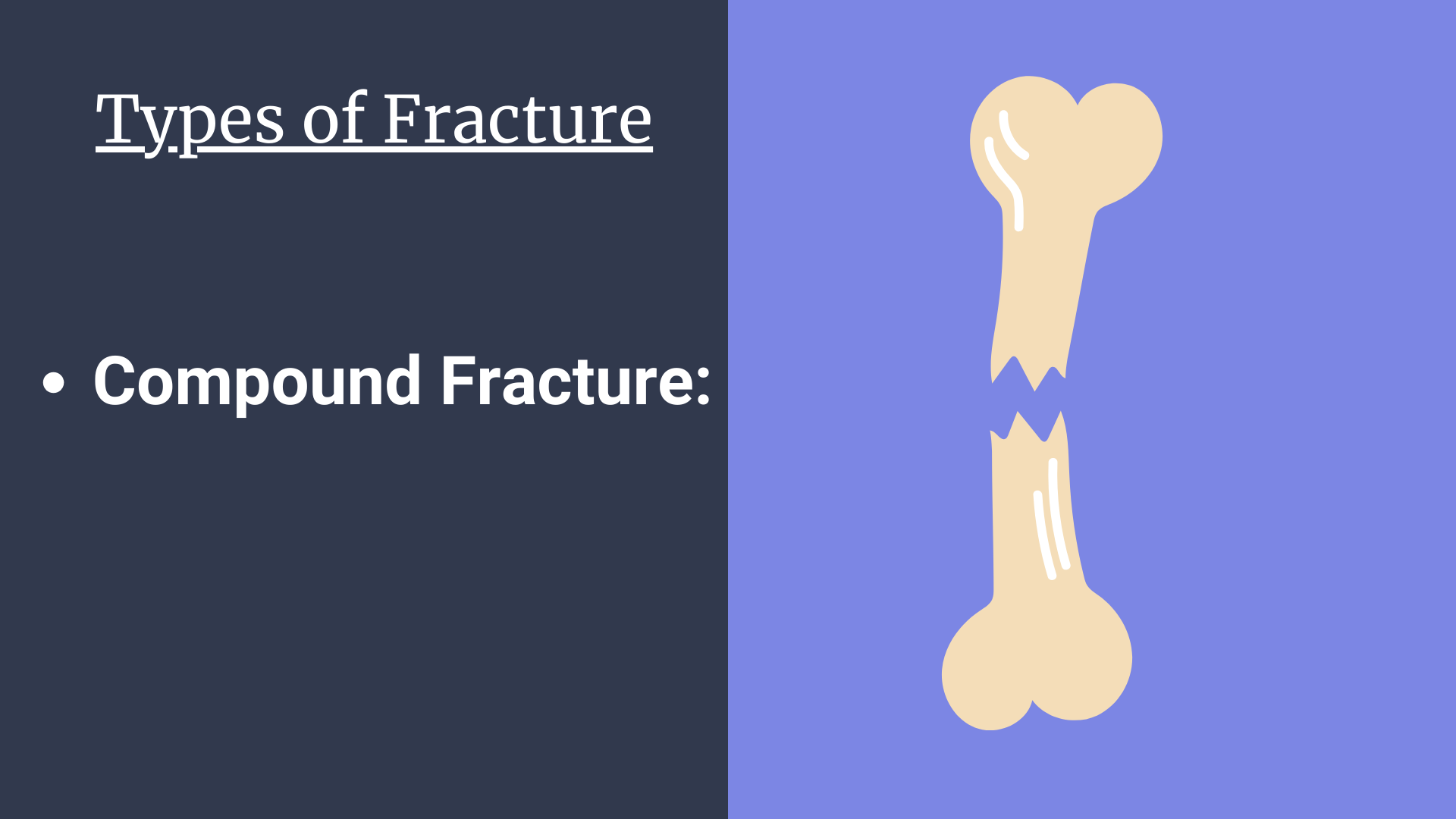Bone Injury and Bone Repair

Understanding Fractures
A fracture refers to a break in the continuity of a bone, which can vary in severity and type. Fractures can occur due to various reasons such as trauma, falls, or underlying bone conditions. There are two primary types of fractures:
1. Simple Fracture
2. Compound Fracture

1. Simple Fracture (Closed Fracture):
A simple fracture is where the bone breaks but does not produce an open wound in the skin. The surrounding tissues remain intact, and the bone does not protrude through the skin.

2. Compound Fracture (Open Fracture):
In a compound fracture, the bone breaks and produces an open wound in the skin, often with the bone piercing through the skin. This type of fracture is more severe due to the risk of infection and extensive damage to surrounding tissues.

Bone Repair Process
When a bone is injured, the body initiates a complex healing process to repair the fracture. This natural process occurs in several stages, each playing a crucial role in restoring the bone to its normal structure.

Following are the stages of Bone Repair process:
- Initial Response – Formation of Blood Clot:
Following a fracture, the blood vessels within the bone are damaged, leading to bleeding. The body responds by forming a blood clot at the site of the injury to stop the bleeding. This clot serves as the foundation for the healing process, providing a scaffold for the influx of cells necessary for repair. - Granulation Tissue Formation:
New blood capillaries, fibroblasts, and osteoprogenitor cells migrate to the site of the blood clot. Fibroblasts, which are cells that produce connective tissue, begin forming granulation tissue, a loose connective tissue that acts as a temporary framework at the fracture site. - Fibrocartilage Callus Formation:
Osteoprogenitor cells at the injury site differentiate into chondroblasts, which are cells responsible for forming cartilage. These chondroblasts produce hyaline cartilage within the granulation tissue, resulting in the formation of a fibrocartilage callus. This callus stabilizes the fracture and serves as a precursor to new bone formation. - Bony Callus Formation:
As the healing process continues, osteoprogenitor cells further differentiate into osteoblasts, the bone-forming cells. These osteoblasts begin replacing the fibrocartilage with bone tissue, transforming the fibrocartilage callus into a bony callus. This stage marks the beginning of the true bone healing process. - Mature Bone Formation:
The final stage of bone repair involves the gradual replacement of the bony callus with mature bone tissue. Over time, the bone remodels itself, restoring its original shape and strength. This remodeling phase can take several months, depending on the severity of the fracture and the individual’s healing capacity.
Conclusion
The body’s ability to repair bone injuries is a remarkable process involving various cells and tissues working together. Understanding the stages of bone repair can provide insight into how the body heals and the importance of proper care during recovery. Whether it’s a simple or compound fracture, the body’s natural healing process is essential in returning the bone to its normal function.